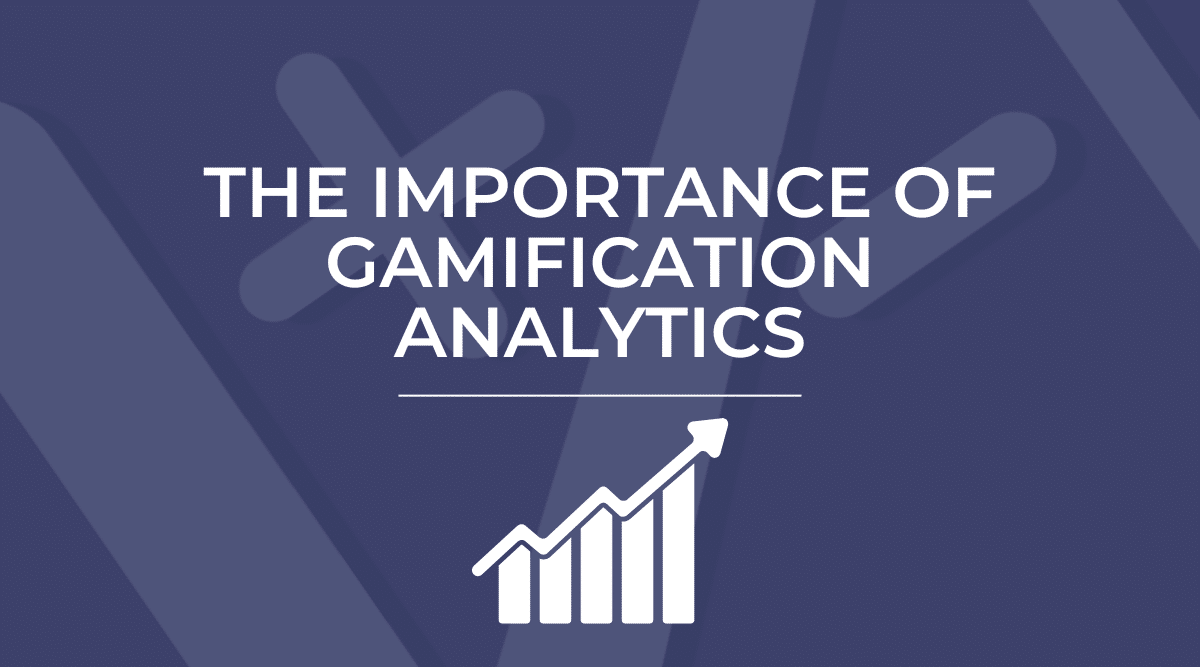Analytics and Gamification
We all know that data is very valuable. Companies collect all kinds of data and hold on to it until they can figure out a way to use it. Google, Facebook, Twitter and the list goes on, they all store our data. Mass data allows us to see a person’s behaviors, interests, etc. Using this data, we can bring them exactly what they are looking for before they even know it’s what they want. This will remove a lot of the guess work and deliver results faster.
Website and app developers utilize analytics to see how people are interacting with their site or app. This is exactly the case with workplace gamification. The only way to truly change a culture is by having everyone buy into it. In order to have everyone on board you will need to truly understand what it is your gamification software can help them with.
Workplace gamification was designed to drive behavior at work and is like a Fitbit for work. Like a Fitbit tracks your steps, goals, etc., gamification software is designed to do the same with your job. Tracking inbound/outbound calls, emails sent/received, time it took to resolve an issue and the list goes on. In a recent study by Rui Huang, it was found
“Educational researchers and practitioners both struggle with identifying when, where, and how to use gamification design concepts.”
By hitting your goals or expectations you are in the green but if you don’t then you are in the red. Sounds great, but if you don’t measure this, then how do you know if it is truly working? There needs to be something in place showing if it is too easy to be in the green or way too difficult to stay out of the red. That is a big reason why I have been focused on gamification analytics and how we use it. Studying this data can help deliver a solution that works best for users. A big thing when using an app, website or any tool is trust. Trusting that the data is accurate and not skewed in any way. Analytics will help gain and keep people’s trust.
It’s harder than ever to keep employees engaged and active. First, we’ve got Gen Z and millennials entering the workforce. These generations thrive off a culture rooted in reward and recognition. And without it, 70% are likely to change jobs every two years. In addition, we now have a newly remote workforce navigating the challenges of working from their kitchen tables. Finding new ways to keep employees engaged and enthusiastic has become a necessity. Gamification software is designed to make day to day task more fun and rewarding. It should fit in seamlessly and become a tool that users rely on. If executed properly a gamification software can help keep clear transparency within a company. Gamifying your workplace means your employees are immersed in an exciting realm of friendly competition and a culture of positivity, teamwork, and accountability.
Public leaderboards, a real-time newsfeed, levels and ranks, contests, and rewards motivate your employees to perform better than ever before. High attrition rates are often due to employees feeling as if they do not have a future in their current roles. When there is no defined career path, employees are not entirely sure what achievement means and how it will impact them. With gamification software that provides rank and level system, employees can see exactly where they are headed, how to get there, and what awaits them at the top. Between the mind-numbing data drown and a workforce that always seems disengaged, productivity is plummeting. Meanwhile, costs and attrition rates are climbing to an all-time high. As this is clearly a growing problem after a decade of development, ZIZO launched. This is a revolutionary software platform that takes the stress out of managing and motivating your workforce. To learn more about ZIZO, click here!
Monitoring and Adapting
However, it is not enough to just build the gamification software and leave it alone. It is crucial to continue to study the habits of users to make adjustments when necessary. Deciding when to make things simpler, more engaging or enticing is what will make or break the software in the long run. Like Lori Sherer found
“The technological challenge is hard enough. You have to identify the right data and develop useful tools, such as predictive algorithms. But then comes an even tougher task: getting people to actually use the new tools.”
Let me give you an example to demonstrate what I mean by this:
Hypothetically you have 2 gamification software companies called Company A and Company B. Both have what they believe is the best of the best and will revolutionize the way business operates. The goal is to provide an amazing experience for the users but also show the value of the software. Company A has analytics integrated into their app. It tracks where people click, where they might be stuck and any potential issues. Using this data, they noticed that a lot of people are struggling to advance in the rankings. They will go from rookie to pro pretty quickly but then moving on from pro is very difficult. Users began to get frustrated, so they looked things over and made adjustments. After the adjustments users were noticeably happier and engagement increased. While on the other hand Company B is not running analytics and has no idea that this is going on. Users are slowly becoming irritated, and they are no longer using the software. This eventually makes its way up the chain and the decision makers feel like this isn’t working and decide to cut ties. Although the software is really well made and could be a huge benefit, they did not know what changes needed to be made. This resulted in the gamification software not working.
Using Gamification Analytics Data
It is crucial to use analytics to gather information at a larger scale. Getting reviews and asking people to complete surveys will help but analytics will show you what people can’t tell you. It reveals people’s habits, frustrations, likes and dislikes. It helps you figure out why people keep coming back or why they avoid using the software. Reviewing the data for trends helps resolve problems that might not have been noticed before. To the opposite side of the spectrum, it can also show how to enhance features that are doing really well. Without analytics we would be flying blind; not knowing what is working and what isn’t working. In an eBook written by Benjamin Heilbrunn he states,
“Even though experts agree on the importance of these activities, concrete processes and software tools have not been investigated yet.”
With this being such a new space there is no proven method just yet. Gamification will change the workplace there is no doubt about that, but it won’t happen overnight. Studying how gamification software plays a role in the workplace will only help the growth of workplace gamification. Daily, weekly and even monthly challenges will help push people to work a little harder, but more data is required to keep people engaged. Optimizing Gamification to gain a deep understanding is the only way to ensure engagement.



